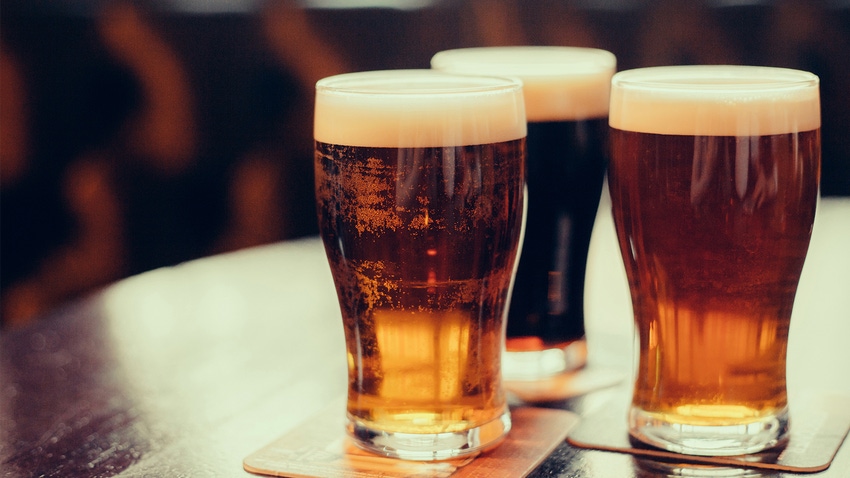Brewers, distillers denounce new food safety study
A recent study by Cornell University and USDA claims nonalcoholic beer may require additional food safety measures. Some brewers and distillers disagree.

At a Glance
- A new study suggests that improperly manufactured nonalcoholic craft beer may pose a risk to consumer health.
- Some brewers and distillers of nonalcoholic beverages believe existing food safety regulations are sufficient.
- Alcohol may not be the universal preservative some claim it to be, especially at the low levels found in traditional beer.
Cornell University recently published a study, funded in part by USDA, suggesting that no- and low-alcohol craft beer may have an increased risk of foodborne pathogens due to the absence of alcohol, a natural preservative. Now, some producers of nonalcoholic spirits and beer are speaking out against the study, calling it “clickbait.”
“The point of food safety and food safety regulations is to understand where the risks come from and have documented mitigation steps for them,” Zoe Riccio, senior director of global quality assurance and compliance at Athletic Brewing Co., a leading brewer of nonalcoholic craft beer, said. “You could take anything off the shelf … inoculate it with pathogens, and it’s going to grow. So, it’s not unique to nonalcoholic beer, and it’s not a very valuable study.”
Pointless data points?
The study, “Survival of Foodborne Pathogens in Low and Nonalcoholic Craft Beer,” which was published in the Journal of Food Protection in December 2023, involved inoculating samples of nonalcoholic beer with E. coli, Salmonella enterica and Listeria monocytogenes and storing them at 39 degrees and 57 degrees Fahrenheit for two months. In the low-alcohol beer, the added E. coli and S. enterica doubled at 57 degrees, while listeria was undetectable at both temperatures.
“When you remove the alcohol, it’s really no longer a traditional beer,” Randy Worobo, professor of food science in the College of Agriculture and Life Sciences at Cornell and senior author of the study, said to the Cornell Chronicle. “We suspected that foodborne pathogens would be able to grow without the presence of alcohol. We were correct. At that point, you must consider nonalcoholic beer like food and make sure that all parameters are met guaranteeing product safety.”
Kerr Nicholl, production director and co-founder of UK-based nonalcoholic beverage brand Spirits of Virtue, claims that is precisely what producers of no- and low-alcohol libations are already doing. He even addressed how they manage varying food safety regulations based on location, since these products ship overseas.
“There’s a level of preservative in our products, as there is in all zero-alcohol spirits,” he said. “We’ve put an awful lot of time and consideration into that, and we believe we have the right balance. FDA has very rigid standards in terms of what they allow.”
The power of pasteurization
Existing food safety regulations led Athletic Brewing Co. to build a state-of-the-art factory and implement extensive quality control processes. Not every small brewer can afford such facilities, but all are held to the same standard regardless.
“The requirement by FDA is to look at every ingredient and every process step and determine, ‘Am I introducing a hazard and am I increasing or decreasing the likelihood of that hazard?’” Riccio said. “If you’re a brewery that’s producing a nonalcoholic beverage at over 5% of your sales, you have to introduce and follow 21 CFR 117.”
FDA’s Code of Federal Regulations (CFR), Title 21, Part 117 outlines the current best practices for implementing risk-based preventive controls for foods intended for human consumption. In other words, it provides the basic safety requirements all food and beverage product manufacturers must follow.
According to Bill Shufelt, co-founder and CEO of Athletic, many brands go above and beyond, using techniques like tunnel pasteurization to ensure safe, high-quality products that can last for six months or longer on the shelf.
“[Tunnel] pasteurization … has this ‘highly processed’ feel to it, but it really is a very gentle process,” he explained. “The finished product is already in the can moving on the conveyor belt, and water is sprinkled on the can … we can very slowly raise the temperature, so it won’t damage our product but will kill all bacteria, and then very gently cool it down.”
Brewer’s Association, an organization with members from more than 5,600 U.S. breweries, issued its own safety recommendations for nonalcoholic beer production, which it said is “more vulnerable to spoilage by food borne pathogens and microorganisms that affect quality” than traditional beer. One of the methods it recommends is tunnel pasteurization, which it claims is superior to flash pasteurization for maintaining flavor quality, in addition to sterile filtration and preservatives.
Shufelt and Brewer’s Association both stress producers of any beverage — alcoholic or otherwise — must do due diligence to ensure they’re making a safe product, as alcohol alone may not be the panacea of preservatives many make it out to be.
Alcohol in beer
Because alcohol destroys the kinds of microorganisms that cause spoilage, it has long been used as a preservative, but these properties could be overblown in low-alcohol beverages like traditional beer, which usually don’t exceed 10% alcohol by volume (ABV).
“Alcohol’s not the universal preservative people think it is, certainly not at 4%, 5% and 6% [ABV], or even at 7%, 8% and 9% [ABV],” Riccio said. “There are a lot of things that can grow, and if you’re doing adjuncts, there are molds and other microorganisms that are not pathogenic … spoilage and pathogenic are very different things. You should have a food safety plan that addresses both.”
The Cornell study admits in its introduction that “pathogens can survive in alcoholic beverages.” It also acknowledges that beer is generally considered safe from foodborne pathogens due to various factors — not only ethanol concentration, but also hops bitter acids, low pH, high dissolved carbon dioxide content, low oxygen content and a lack of nutritive substances.
“The study rightfully includes that these things grow in alcoholic beer,” Riccio explained. “They grow slower, but … it doesn’t matter if you have a hundred salmonella cells or a million salmonella cells; that is an adulterated product. And the fact that it can grow in beer or survive in alcohol means that we all should be controlling the same risk.”
Foodborne illness is always a risk, but you likely have the same odds as from any other food or beverage at your local grocery store — except maybe a nice 100-proof whiskey.
About the Author(s)
You May Also Like






